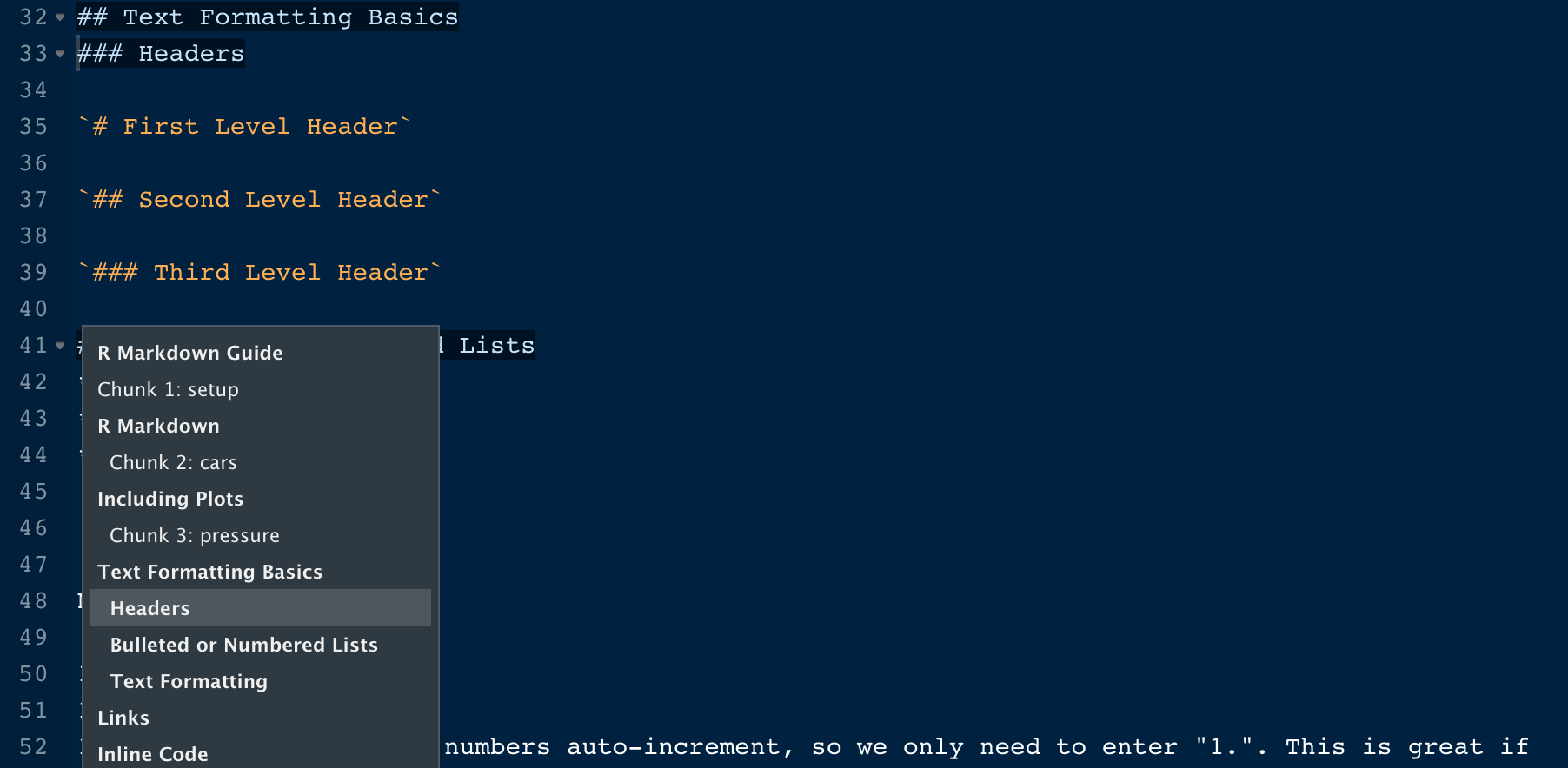- The Markdown Guide
- The Macsparky Markdown Field Guide Pdf
- The Markdown Guide Pdf
- Markdown The Definitive Guide
- The Macsparky Markdown Field Guide
Markdown Quick Reference Cheat Sheet

Read through our Markdown kramdown Style Guide! Markdown Guide Markdown Style Guide for about.GitLab.com This website was generated by Middleman, a blog-aware Static Site Generator (SSG) widely used by web developers. Markup language is part of the structure of any SSG. Markdown syntax guide. Data Center and Server 7.10. Importing code from an existing project. Controlling access to code. 3 hours ago Getting Started With Markdown Beginner’s Guide Last updated April 23, 2021 By Bill Dyer 1 Comment In my work, I often have to write code, write the documentation that goes with that code, create Web pages, and work on text restoration projects, and have written several formal papers while I. Praise for the Markdown Field Guide. 'The MacSparky Markdown Field Guide: New e-book from David Sparks and Eddie Smith, jam-packed with details, tips.
Note: The instructions from this guide are referring to the Classic Editor. If you are using the WordPress block editor, please see this guide.
See the Markdown page for instructions on enabling Markdown for posts, pages and comments on your blog, and for more detailed information about using Markdown.
The Markdown Guide
| Markdown | Processed | |
|---|---|---|
| Emphasis | Emphasize Strong Some WordPress.com themes may have different formatting for these styles | |
| Inline Links | Most browsers show the title text when hovering over a link. Please note that WordPress shortcodes, like [video] or [audio], will take priority over Markdown links and shouldn’t be used for link text. | A link. |
| Referenced Links | The reference section can be anywhere in the document | Some text with a link and another link. |
| Inline Images | The “Alt” text (alternative text) makes images accessible to visually impaired | Logo: |
| Referenced Images | Smaller logo: | |
| Linked Images | Linked logo: | |
| Footnotes | Footnotes will be added to the bottom of the document, with a link back to the original reference | I have more 1 to say up here. |
| Line breaks | We do not support Markdown’s typical double-space to generate a line break due to our built-in auto-linebreaking function. A regular line break will generate a line break on output. | |
| Bullet Lists |
| |
| Numbered Lists |
| |
| Mixed Lists |
| |
| Blockquotes |
| |
| Preformatted | ||
| Code | This is code | |
| Code block | ||
| Syntax highlighting | See Posting Source Code for supported languages | |
| Headers | Closing hash marks are optional on all levels | Header 1 Header 2 Header 3 Header 4 Header 5 Header 6 |
| Definition Lists |
Formatting for definition lists may vary between themes | |
| Abbreviations | Definitions can be anywhere in the document | Markdown converts text to HTML. |
These are some of the most useful Markdown features available on WordPress.com. See the official Markdown project and Markdown Extra for details about all available features, and variations on the features mentioned here.
Versatile plans and pricing
Free
Best for students
Personal
Best for hobbyists
Premium
Best for freelancers
Business
Best for small businesses
Note: This book has been published by Chapman & Hall/CRC. The online version of this book is free to read here (thanks to Chapman & Hall/CRC), and licensed under the Creative Commons Attribution-NonCommercial-ShareAlike 4.0 International License.
The document format “R Markdown” was first introduced in the knitr package (Xie 2015, 2021b) in early 2012. The idea was to embed code chunks (of R or other languages) in Markdown documents. In fact, knitr supported several authoring languages from the beginning in addition to Markdown, including LaTeX, HTML, AsciiDoc, reStructuredText, and Textile. Looking back over the five years, it seems to be fair to say that Markdown has become the most popular document format, which is what we expected. The simplicity of Markdown clearly stands out among these document formats.
However, the original version of Markdown invented by John Gruber was often found overly simple and not suitable to write highly technical documents. For example, there was no syntax for tables, footnotes, math expressions, or citations. Fortunately, John MacFarlane created a wonderful package named Pandoc (http://pandoc.org) to convert Markdown documents (and many other types of documents) to a large variety of output formats. More importantly, the Markdown syntax was significantly enriched. Now we can write more types of elements with Markdown while still enjoying its simplicity.
In a nutshell, R Markdown stands on the shoulders of knitr and Pandoc. The former executes the computer code embedded in Markdown, and converts R Markdown to Markdown. The latter renders Markdown to the output format you want (such as PDF, HTML, Word, and so on).
The Macsparky Markdown Field Guide Pdf
The rmarkdown package (Allaire, Xie, McPherson, et al. 2021) was first created in early 2014. During the past four years, it has steadily evolved into a relatively complete ecosystem for authoring documents, so it is a good time for us to provide a definitive guide to this ecosystem now. At this point, there are a large number of tasks that you could do with R Markdown:
Compile a single R Markdown document to a report in different formats, such as PDF, HTML, or Word.
Create notebooks in which you can directly run code chunks interactively.
Make slides for presentations (HTML5, LaTeX Beamer, or PowerPoint).
Produce dashboards with flexible, interactive, and attractive layouts.
Build interactive applications based on Shiny.
Write journal articles.
Author books of multiple chapters.
Generate websites and blogs.
There is a fundamental assumption underneath R Markdown that users should be aware of: we assume it suffices that only a limited number of features are supported in Markdown. By “features,” we mean the types of elements you can create with native Markdown. The limitation is a great feature, not a bug. R Markdown may not be the right format for you if you find these elements not enough for your writing: paragraphs, (section) headers, block quotations, code blocks, (numbered and unnumbered) lists, horizontal rules, tables, inline formatting (emphasis, strikeout, superscripts, subscripts, verbatim, and small caps text), LaTeX math expressions, equations, links, images, footnotes, citations, theorems, proofs, and examples. We believe this list of elements suffice for most technical and non-technical documents. It may not be impossible to support other types of elements in R Markdown, but you may start to lose the simplicity of Markdown if you wish to go that far.

The Markdown Guide Pdf
Epictetus once said, “Wealth consists not in having great possessions, but in having few wants.” The spirit is also reflected in Markdown. If you can control your preoccupation with pursuing typesetting features, you should be much more efficient in writing the content and can become a prolific author. It is entirely possible to succeed with simplicity. Jung Jae-sung was a legendary badminton player with a remarkably simple playing style: he did not look like a talented player and was very short compared to other players, so most of the time you would just see him jump three feet off the ground and smash like thunder over and over again in the back court until he beats his opponents.
Markdown The Definitive Guide
Please do not underestimate the customizability of R Markdown because of the simplicity of its syntax. In particular, Pandoc templates can be surprisingly powerful, as long as you understand the underlying technologies such as LaTeX and CSS, and are willing to invest time in the appearance of your output documents (reports, books, presentations, and/or websites). As one example, you may check out the PDF report of the 2017 Employer Health Benefits Survey. It looks fairly sophisticated, but was actually produced via bookdown(Xie 2016), which is an R Markdown extension. A custom LaTeX template and a lot of LaTeX tricks were used to generate this report. Not surprisingly, this very book that you are reading right now was also written in R Markdown, and its full source is publicly available in the GitHub repository https://github.com/rstudio/rmarkdown-book.
The Macsparky Markdown Field Guide
R Markdown documents are often portable in the sense that they can be compiled to multiple types of output formats. Again, this is mainly due to the simplified syntax of the authoring language, Markdown. The simpler the elements in your document are, the more likely that the document can be converted to different formats. Similarly, if you heavily tailor R Markdown to a specific output format (e.g., LaTeX), you are likely to lose the portability, because not all features in one format work in another format.
Last but not least, your computing results will be more likely to be reproducible if you use R Markdown (or other knitr-based source documents), compared to the manual cut-and-paste approach. This is because the results are dynamically generated from computer source code. If anything goes wrong or needs to be updated, you can simply fix or update the source code, compile the document again, and the results will be automatically updated. You can enjoy reproducibility and convenience at the same time.
